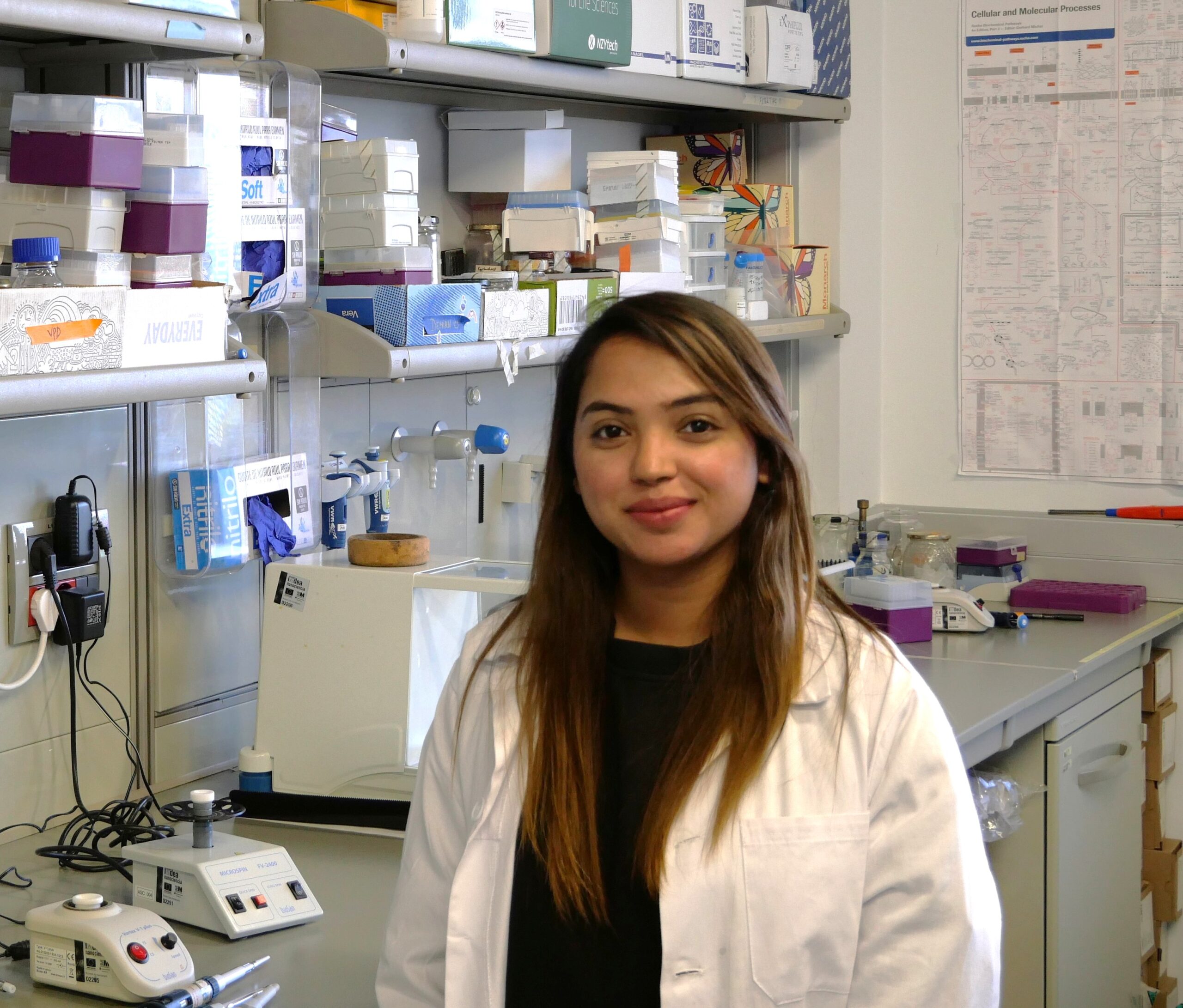
Ammara Safdar
EDUCATION
BS in Nanoscience and Nanotechnology, Preston Institute of Nanoscience and Technology (PINSAT), Preston University, Islamabad, Pakistan.
MS in Nanoscience and Technology, National Center for Nanoscience and Technology (NCNST), University of Chinese Academy of Sciences (UCAS), China.
PROJECT
Albumin Nanoparticle-Based Oligonucleotide Delivery System for lncRNA Modulation in Uveal Melanoma
My project focuses on targeting lncRNAs in uveal melanoma by designing and developing albumin-based nanoparticles as a biocompatible delivery platform. These nanoparticles will encapsulate therapeutic oligonucleotides (siRNA/ASOs) and be functionalized with aptamers to enable precise cellular and nuclear targeting, enhancing treatment specificity and efficacy.
PI: Prof. Álvaro Somoza.
Where do you come from?
I come from Chakwal, Punjab, a region in the Salt Range (India) known for its striking mountains and natural beauty.
Whatare your main personal and professional concerns?
Personally, my main concern is maintaining a healthy balance between my academic commitments and overall well-being. Professionally, my concern is staying competitive in the rapidly evolving field of nanomedicine, continuously upgrading my skills, keeping up with cutting-edge research, and ensuring my work translates into real therapeutic benefits for patients.
What does your research consist on?
My research so far has focused on the synthesis, functionalization, and biomedical applications of nanoparticles. During my Master’s I worked on a project entitled “Revolutionizing Trauma Care: Platelet Membrane-Coated Polymer Nanoparticles for Enhanced Hemostasis.” I developed tranexamic acid-loaded PLGA nanoparticles coated with platelet membranes, characterized them using DLS, SEM, and TEM, and evaluated their hemostatic performance through in vitro assays (hemocompatibility, coagulation, APTT/PTT) as well as in vivo studies such as mouse tail bleeding models and biodistribution analysis with IVIS. biodistribution analysis with IVIS.
Previously, as a fellow at iThemba LABS in South Africa, I focused on the green synthesis of metal oxide nanoparticles (Co₃O₄, MgO, NiCo₂O₄, NiFe₂O₄) using Hyphaene thebaica fruit extract, studying their structural, magnetic, electrical, and photocatalytic properties using advanced characterization techniques like SEM, TEM, Raman, FTIR, VSM, and cyclic voltammetry.
I also completed projects and internships in Pakistan, including the synthesis and characterization of erythrocyte membrane-coated, curcumin-capped silver nanoparticles, where I investigated their biocompatibility. My early semester projects during bachelors centered on the synthesis of metal and metal oxide nanoparticles.
What power does science have to transform the world?
Nanoscience has the power to transform medicine, energy, and the environment. In healthcare, it can revolutionize diagnostics and treatments, offering precise, targeted, and less invasive therapies. Beyond medicine, nanoscience can help create more sustainable materials, cleaner energy, and innovative technologies that reshape everyday life.
Where do you find inspiration?
I first found deep inspiration during my school years, when a very close neighbor of ours battled cancer with remarkable resilience before passing away. Witnessing their struggle left a lasting impression on me and sparked my desire to explore how science; especially nanoscience could offer new hope and better treatments for patients facing such difficult journeys.
Where do you see yourself in the future?
In the future, I see myself as an independent researcher leading projects in nanomedicine, contributing to both academia and industry, and mentoring the next generation of scientists.
Why IMDEA Nanociencia?
I chose IMDEA Nanociencia because it is one of the leading institutes in Spain conducting cutting-edge research in nanoscience and technology, and it is very well internationally recognized. The institute’s research closely aligns with my previous academic background, and the opportunity to work under Prof. Álvaro Somoza whose work directly matches my interests makes it an ideal environment for my academic and professional growth.
